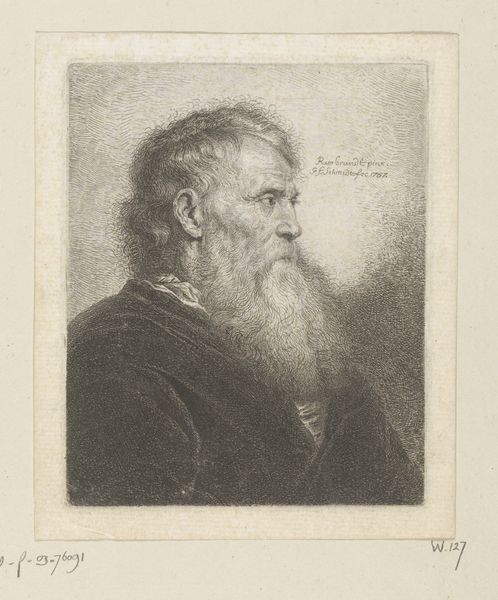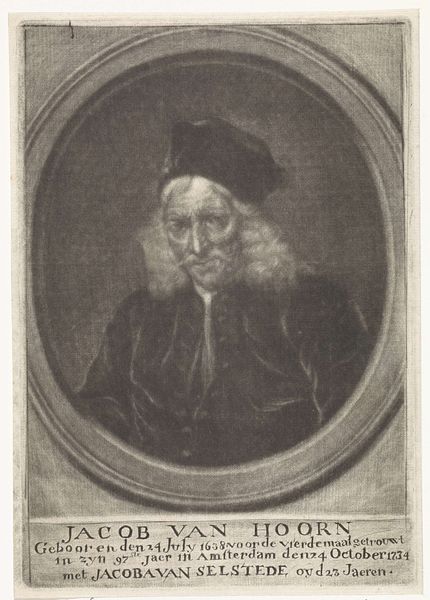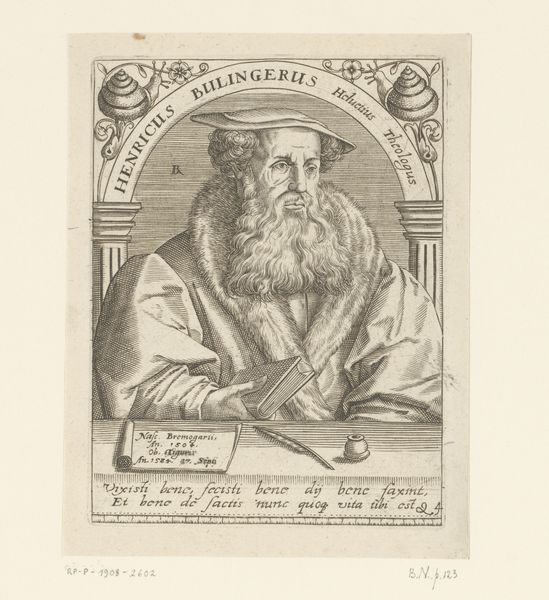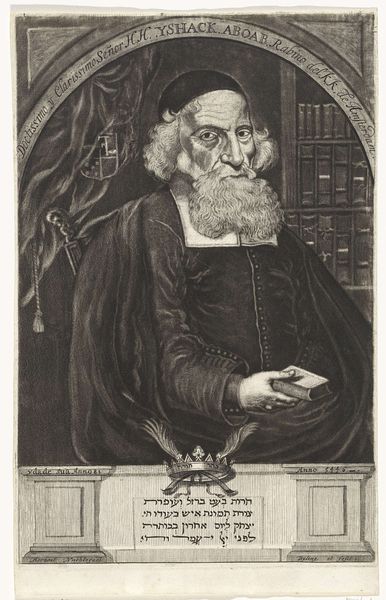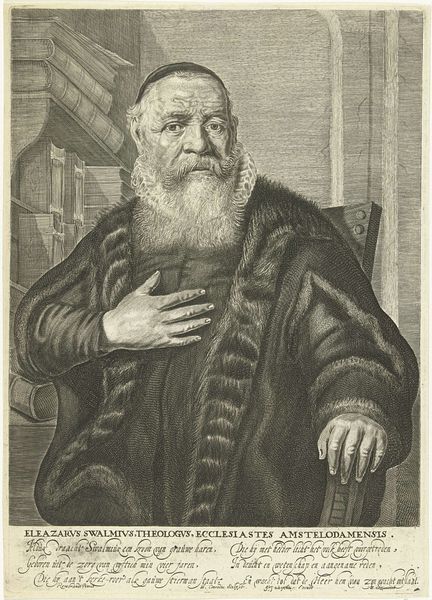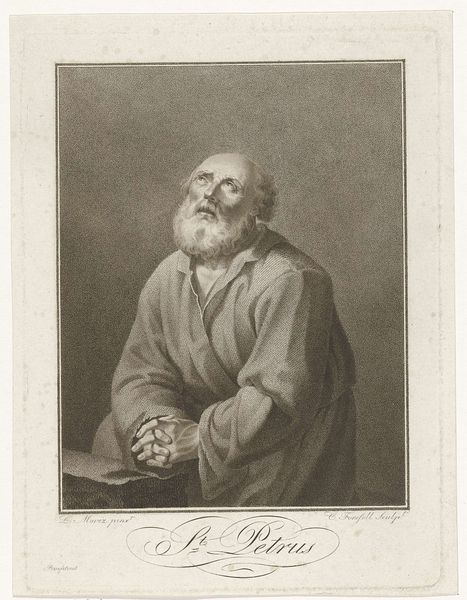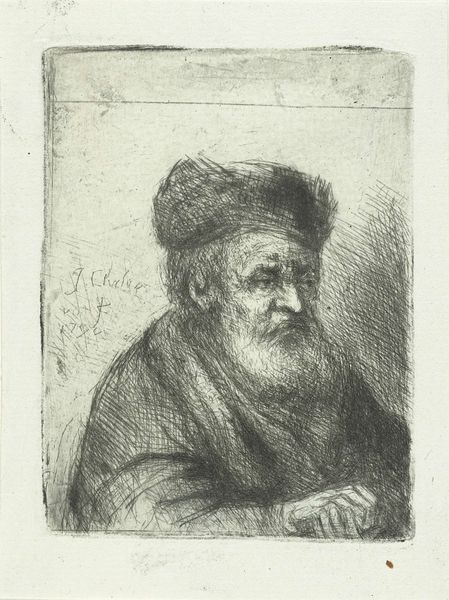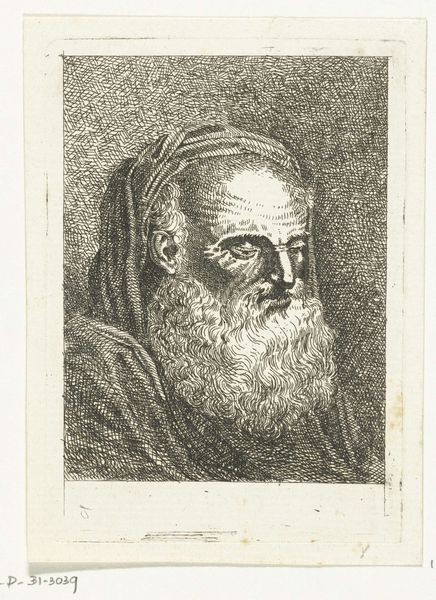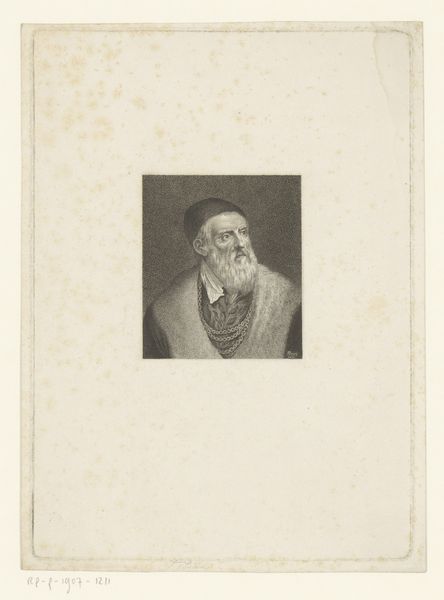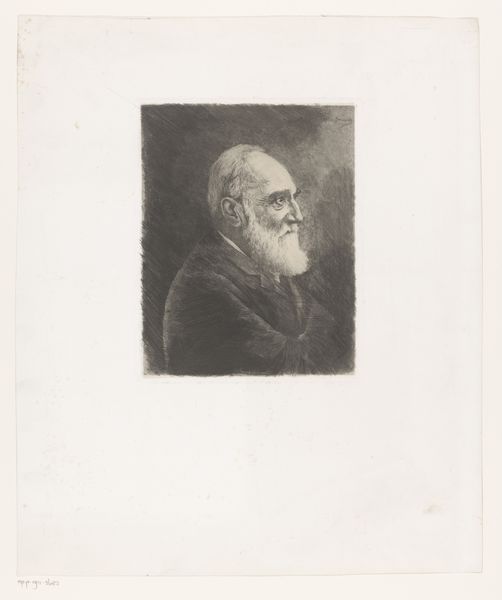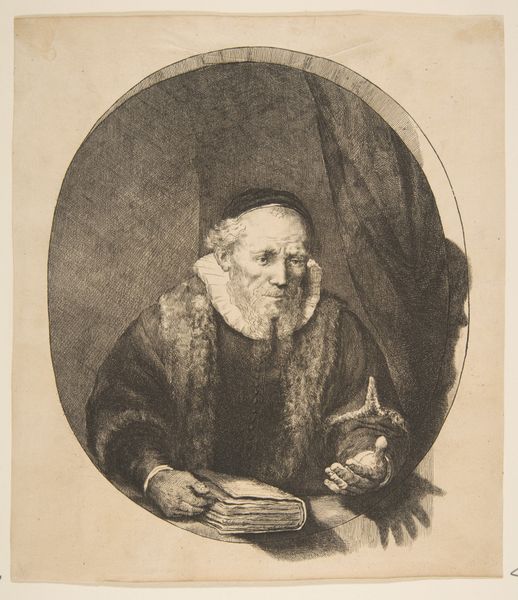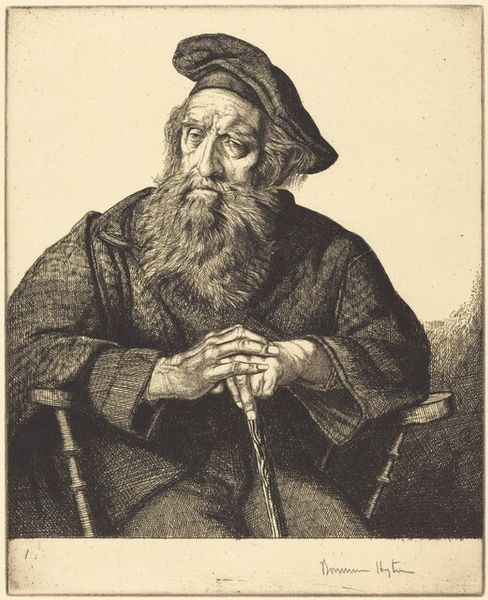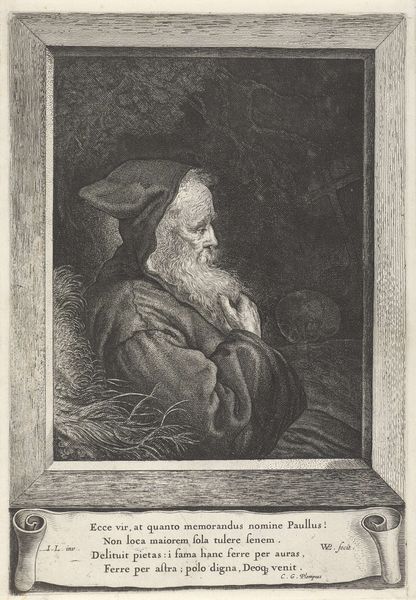
print, engraving
#
portrait
#
baroque
#
dutch-golden-age
# print
#
genre-painting
#
engraving
Dimensions: height 320 mm, width 220 mm
Copyright: Rijks Museum: Open Domain
Editor: This is "Portret van Isaac Aboab da Fonseca," created in 1689 by Aernout Naghtegael. It’s an engraving, a print. It feels incredibly formal and reserved. What’s most striking to me is the direct gaze. What can you tell me about this portrait? Curator: Well, placing this portrait within its historical context is crucial. This work exemplifies the cultural and religious tolerance present in the Dutch Golden Age. The sitter, Rabbi Isaac Aboab da Fonseca, was a prominent figure in the Sephardic Jewish community of Amsterdam, a community that flourished due to the relatively liberal policies of the Dutch Republic. What do you notice about the inclusion of both Spanish and Hebrew texts below the portrait? Editor: I guess it speaks to the multicultural environment… the merging of Sephardic traditions with Dutch society? Curator: Precisely. Consider how printmaking itself facilitated the wide dissemination of images and ideas during this period. This portrait wasn't just a likeness; it served as a visual representation of Aboab’s status and influence within his community, reinforcing social hierarchies and communal identity. The museum display can impact these effects today. What do you make of the choice to portray him with a book? Editor: It signals his scholarship, doesn't it? The book symbolizes knowledge and learning, emphasizing his intellectual role as a Rabbi. Does that influence how you see the museum’s responsibility to interpret his identity? Curator: Absolutely. We should consider not only his religious importance, but also the context in which his image was reproduced and circulated. Ultimately, how might our understanding of this portrait differ if it were displayed in a synagogue versus a public museum? Editor: That’s really insightful. I hadn't fully considered the way institutional settings actively shape how we interpret artwork and historical figures. Curator: And vice versa. Paying attention to that interplay will help to continually revise our historical knowledge and assumptions about who this person really was.
Comments
No comments
Be the first to comment and join the conversation on the ultimate creative platform.
